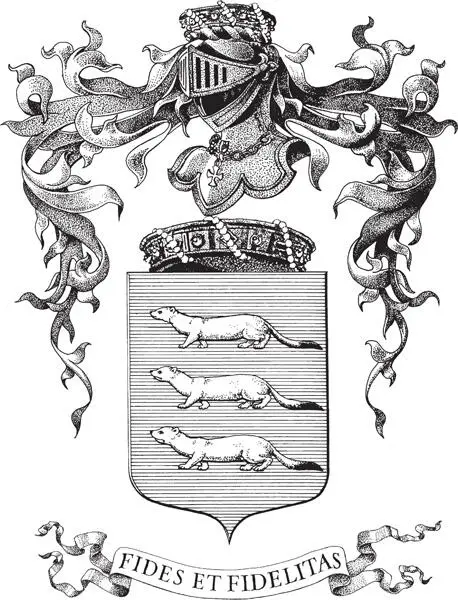
The True Story ofan Italian’s Warin Abyssinia
SEBASTIAN O’KELLY

GVILLET

To Emily and Anna
‘Le due figliole’
Cover
Title Page
Gvillet
Dedication
Epigraph
List of Illustrations
Introduction
1 The Prisoner
2 The Black Sword
3 The Spahys di Libya
4 Riding through Clouds
5 The Conquest of Abyssinia
6 The Sword of Islam
7 Black Flames ZARAGOZA, SPAIN, MARCH 1938
8 The Viceroy
9 City of Facilidas
10 Northern Chessboard
11 Lightning War
12 The Man on the White Horse
13 Keren
14 Private War
15 Major Max
16 A Horse Called Sandro
17 Captain Reich
18 Le Maschere
19 The Well
20 The Smugglers’ Ship
21 Sayed Ibrahim
22 Captain White
23 Arabia Felix
24 Giulio Cesare
25 Sua Maestà
26 Liberation
27 A Bracelet
Epilogue
The Honours Conferred Upon Amedeo Guillet
Index
Acknowledgements
About the Author
Praise
Copyright
About the Publisher
‘On 19 January the 4th and 5th Indian Divisions crossed the frontier north of the Blue Nile … they met little resistance, though at one point a force of local horsemen, the Amharic Cavalry Band led by an Italian officer on a white horse, attempted a death-or-glory charge against their machine-guns.’
John Keegan, The Second World War
Beatrice Gandolfo
Khadija, photographed by Amedeo before the Second world War
The invasion of Ethiopia, October 1935: Amedeo on Sandor with the Spahys di Libya
Uncle Amedeo
Sotto-Tenente Amedeo Guillet, newly commissioned at the Cavalleggeri di Monferrato, 1931
Amedeo, in full dress uniform, 1935
Amedeo jokingly reviews some splendidly attired fellow officers
Amedeo at the Military Academy at Modena, 1928
Amedeo rides down a steep hillside during a cavalry exercise at Pinerolo
Two views of Amedeo as a competitive rider, Genoa 1934
A horseman from the Spahys di Libya
Ethiopian irregulars confront their better-armed adversaries
Realising their position is hopeless, some Ethiopian warriors take flight
The Spahys di Libya completely surround the remaining Ethiopians
Panicking warriors flee amid the Italian light tanks
The Spahys charge on, leaving the remaining Ethiopians to the Italian infantry
Italian infantry pour down the hillside and the remaining Ethiopians make a bid to escape
Ethiopian warriors parade through Addis Ababa
Marshal Badoglio arrives at the front © Ullstein Bilderdienst
Front page story …‘The punishment of Abyssinian brigands …’
Amedeo Guillet after the charge at Selaclaclà in December 1935
Haile Selassie after the defeat at Mai Ceu
The Spahys di Libya in Rome on the first anniversary of the founding of Italy’s African empire, June 1937
Antonio Ajmone Cat
The Duke of Aosta dwarfs King Vittorio Emmanuele III
Princess Jolanda and Amedeo in 1937 in Libya
Mussolini rides into Tripoli © Biblioteca di Storia Moderna e Contem-poranea
Mussolini, Balbo and other Fascists salute the tricolore © Biblioteca di
Storia Moderna e Contemporanea Libyan crowds greet the Duce and Italo Balbo © Biblioteca di Storia Moderna e Contemporanea
Mussolini on horseback surrounded by Libyan troops bearing the fasces
The Duce raises the Sword of Islam
The governor of Libya, Italo Balbo, pins a medal on Amedeo
Amedeo in Spain, beside the Fiat Ansaldo tanks
The general’s adjutant at the Italian front during the Spanish Civil War
General Frusci in the uniform of the ‘Black Flames’ division during the Spanish Civil War
A Russian armoured car captured by Amedeo and the arditi from the Spanish forces, Santander, August 1937
Rome 1938: Hitler stands beside the king; also pictured are Mussolini, Marshal De Bono, Queen Elena, Ciano, Hess, Ribbentrop and Goebbels
Barefoot, malnourished children with their heads shaven turn out for a civic ceremony in Salerno, 1937
General Graziani; and being carried away after an assassination attempt in Addis Ababa, 1937
Beatrice Gandolfo in February 1937, in medieval costume
The fortified outpost at Amba Gheorgis on the road from Gondar to Asmara
Amedeo talking to Landolfo Colonna
Amedeo welcomed by dancing women in the highlands of Begemeder, 1938
Amedeo with an important Ethiopian chief in 1939
Amedeo drilling his garrison at Amba Gheorgis in 1939
The Duke of Aosta inspects the fort at Amba Gheorgis
The garrison at Amba Gheorgis rides out, with Amedeo saluting
Amedeo and others are carried in triumph at Amba Gheorgis after a successful operation against Ethiopian rebels
The Gruppo Bande Amhara a Cavallo Group in full charge
Amedeo with his Gruppo Bande in Eritrea, 1940
Amedeo rides beside General Frusci’s car at an inspection of the Gruppo Bande in the summer of 1940
The infantry of The Gruppo Bande were made up of Yemeni mercenaries
The British invade: The Gazelle Force on the move
The West Yorks Regiment at Dologorodoc
General Nicola Carnimeo
General Frank Messervy
General Lorenzini, the ‘Lion of Keren’
Surrender of the Duke of Aosta
Lieutenant Renato Togni with the horse on which he was killed at Keru in 1941
Daifallah the Yemeni
Amedeo as Ahmed Abdullah
A rare photograph of Ahmed, Imam of the Yemen
Major Max Harari riding the captured Sandor at Asmara, autumn 1941
Major Max Harari leaving his office in Asmara
Sandor’s hoof
Captain Lory Gibbs, who opened fire on Amedeo and Khadija on the road to Ghinda
The tortured Captain Sigismund Reich
Amedeo and Beatrice finally married in Naples, 21 September 1944
Torre Cretarella
The Italian ambassador with a live cobra in New Delhi, 1971
Amedeo, ambassador to Morocco with Italian foreign minister Aldo Moro in 1969
Sir Reginald Savory with his old adversary, London 1976
Amedeo with horsemen from the president of India’s bodyguard, whom he trained to ride Carilli fashion
Amedeo embraces an elderly ascaro at the Catholic cemetery in Asmara
Amedeo beside the tomb of Renato Togni
Amedeo at the pass of Ad Teclesan, where he destroyed three British light tanks
The palace of Italian governors in Massaua, the scene of bitter fighting during Eritrea’s war of independence © Nicola Gaydon
The palace of Italian governors photographed by Max Harari in 1941
Ahmed Abdullah, the water-seller, returns to his old hideout in Al-Katmia
Amedeo in Ireland with Anna and Emily
All pictures without credits are from the private collection of Amedeo Guillet and the author
In 1995 when I was a magazine editor, I asked the great Bill Deedes of the Daily Telegraph to go to Milan to interview Indro Montanelli. In Italian journalism Montanelli, who died in July 2001, was a figure of similar stature and, like Lord Deedes, he had served in the Abyssinian war, although as a volunteer officer rather than as a newsman. I decided that I would go along too, acting as a consigliere –translator, but really to eavesdrop on their conversation.
Читать дальше















